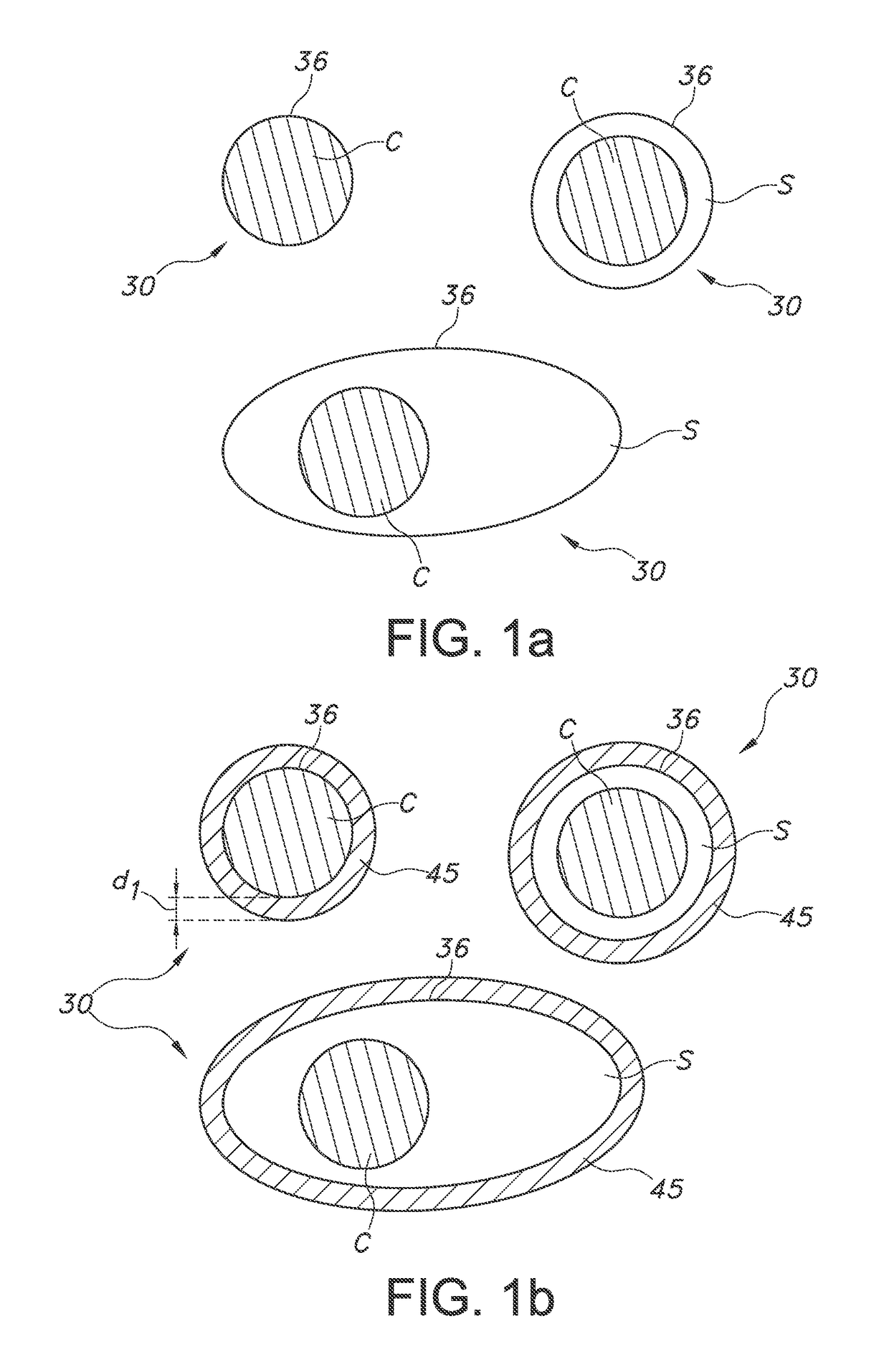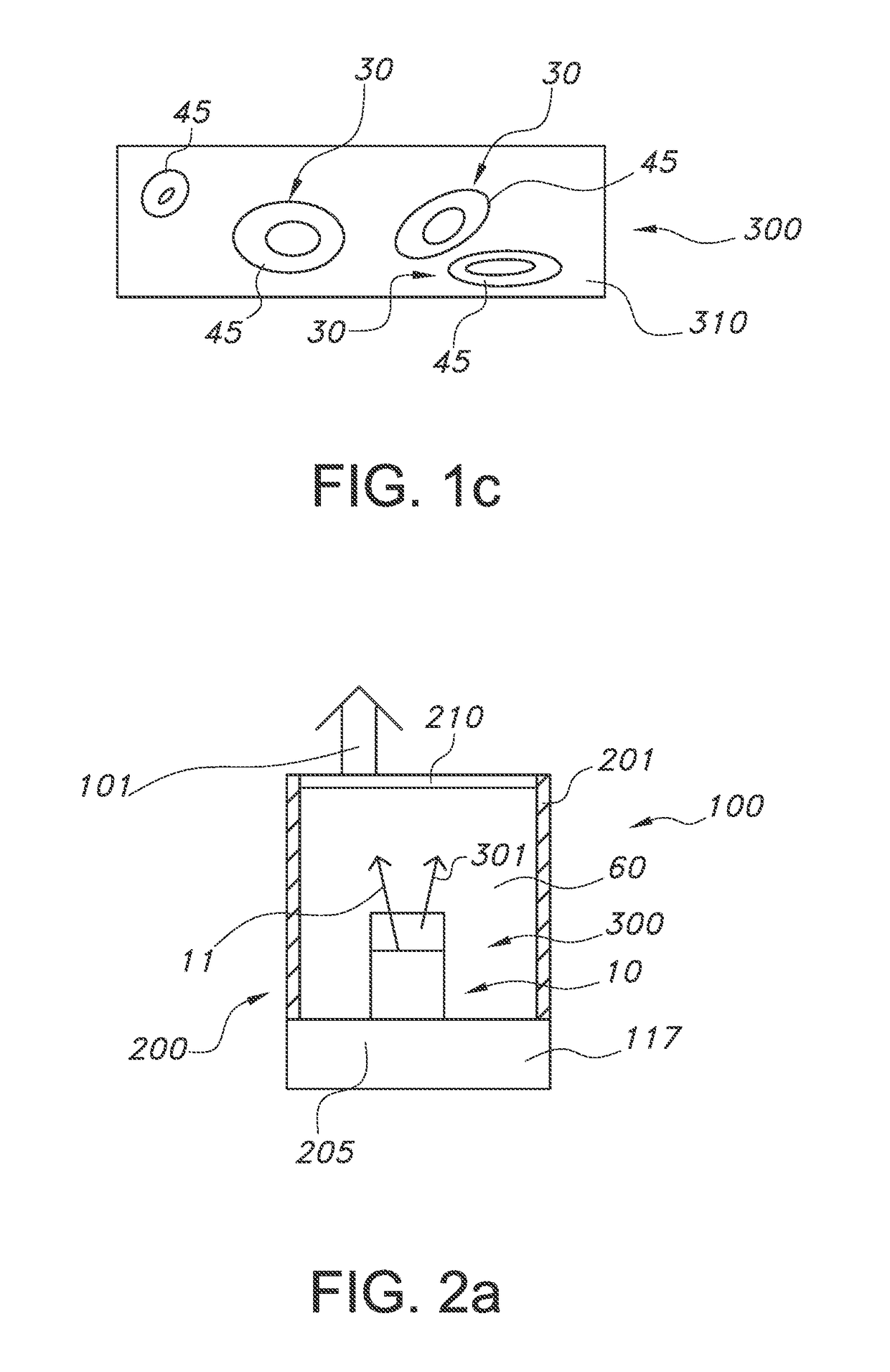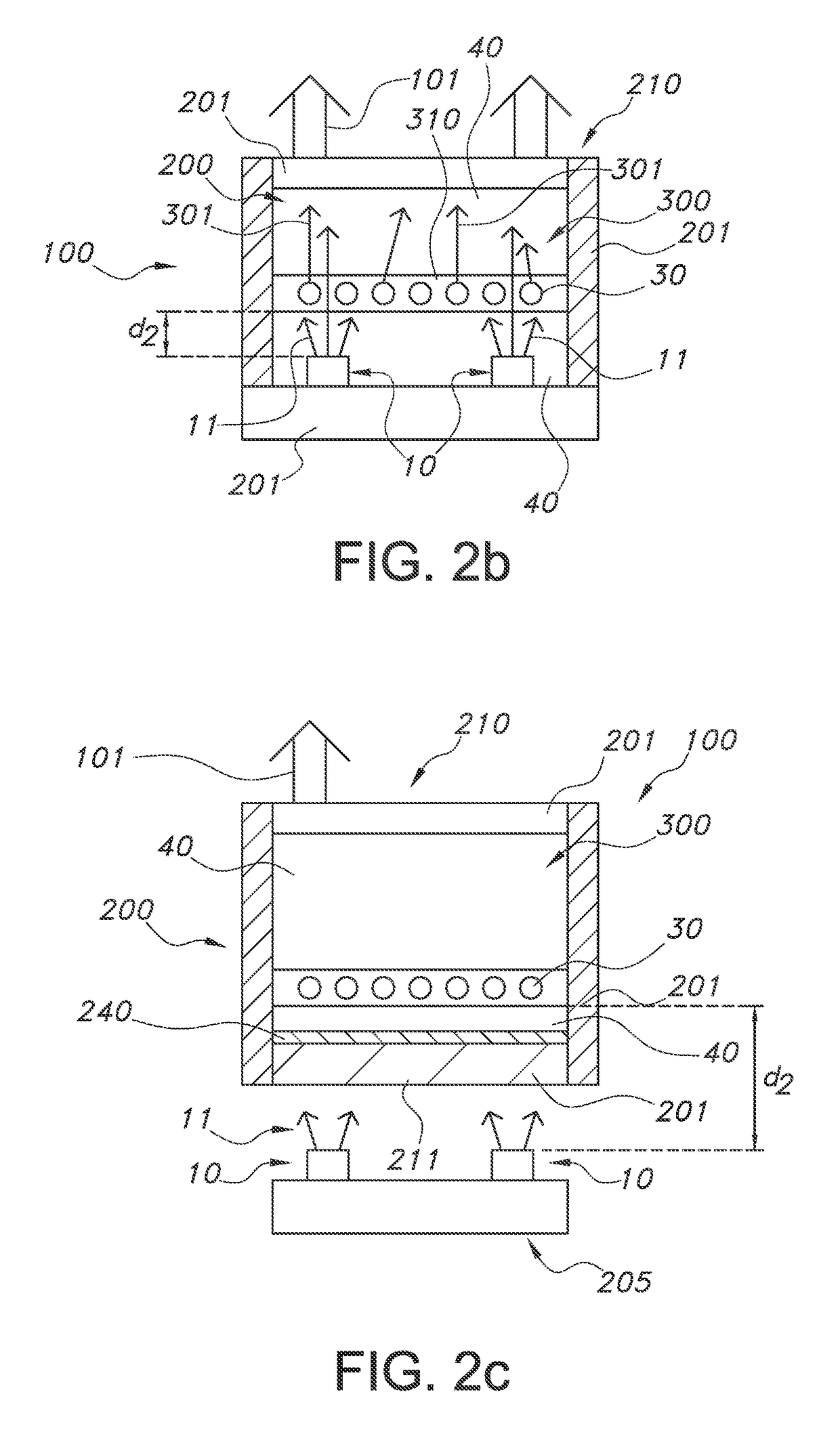Quantum dots in enclosed environment
a quantum dots and enclosed environment technology, applied in the field of lighting devices, can solve the problems of less than desirable, less than general desired, less than desirable, and less good barrier against oxygen or water in ambient conditions, and achieve the effects of improving the emission efficiency of dots, high efficiency, and increasing the efficacy of led based lamps
- Summary
- Abstract
- Description
- Claims
- Application Information
AI Technical Summary
Benefits of technology
Problems solved by technology
Method used
Image
Examples
Embodiment Construction
[0074]FIG. 1a schematically depicts a quantum dot based luminescent material. By way of example different types of QDs, indicated with reference 30, are depicted. The QD at the top left is a bare QD, without shell. The QD is indicated with C (core). The QD 30 at the right top is a core-shell particle, with C again indicating the core, and S indicating the shell. At the bottom, another example of a core-shell QD is schematically depicted, but a quantum dot in rod is used as example. Reference 36 indicates the outer layer, which is in the first example the core material at the external surface, and which is in the latter two embodiments the shell material at the external surface of the QD 30.
[0075]FIG. 1b schematically depicts an embodiment of the luminescent material, but now the QDs 30 including the coating 45, especially an oxide coating, such as a silica coating. The thickness of the coating is indicated with reference d1. The thickness may especially be in the range of 1-50 nm. E...
PUM
 Login to View More
Login to View More Abstract
Description
Claims
Application Information
 Login to View More
Login to View More - R&D
- Intellectual Property
- Life Sciences
- Materials
- Tech Scout
- Unparalleled Data Quality
- Higher Quality Content
- 60% Fewer Hallucinations
Browse by: Latest US Patents, China's latest patents, Technical Efficacy Thesaurus, Application Domain, Technology Topic, Popular Technical Reports.
© 2025 PatSnap. All rights reserved.Legal|Privacy policy|Modern Slavery Act Transparency Statement|Sitemap|About US| Contact US: help@patsnap.com



